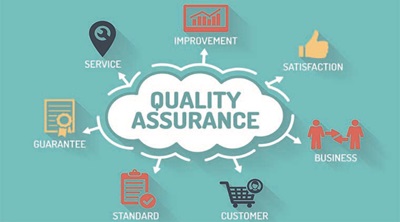In today’s fast-paced digital world, software development is a key driver of business innovation. However, as applications become more complex and feature-rich, the risk of introducing bugs and defects increases. These bugs can lead to significant financial losses, damage to brand reputation, and poor customer experiences. Fortunately, QA (Quality Assurance) as a Service offers a powerful solution to mitigate these risks. By leveraging QA as a Service, businesses can avoid costly software bugs while ensuring that their products are reliable, high-performing, and user-friendly.
What is QA as a Service?
QA as a Service (QAaaS) is a model where businesses outsource their software testing and quality assurance processes to third-party experts. These experts typically provide a range of services, including manual testing, automated testing, performance testing, security testing, and more. Unlike traditional in-house QA teams, QAaaS offers flexibility, scalability, and specialized expertise that can be tailored to a company’s specific needs.
By partnering with a QAaaS provider, companies gain access to experienced testers and advanced testing tools without the need to invest heavily in resources and infrastructure. This approach can significantly reduce the time and cost associated with identifying and fixing software bugs.
The Cost of Software Bugs
Software bugs can have far-reaching consequences, especially when they affect critical systems or customer-facing applications. According to a study by the National Institute of Standards and Technology (NIST), the cost of fixing bugs increases exponentially as the software development lifecycle progresses. Bugs detected in the early stages of development are much cheaper to fix, while those discovered after release can lead to expensive fixes, lost revenue, and even lawsuits.
Here are some key reasons why software bugs can be so costly:
- Lost Revenue: Bugs can cause applications to crash, features to malfunction, or data to be corrupted. This can lead to downtime, which may result in lost sales or revenue.
- Reputation Damage: Customers who encounter bugs are likely to have a negative perception of your product. If the issue isn’t resolved quickly, they may choose to abandon your product and switch to a competitor.
- Legal and Compliance Risks: Some bugs can lead to data breaches, security vulnerabilities, or non-compliance with regulatory standards. These issues can result in legal fines or penalties.
- Resource Wastage: Bug fixing requires the time and effort of your development team, diverting their focus away from building new features or enhancing the product.
How QA as a Service Helps Avoid Costly Software Bugs
1. Comprehensive Testing Coverage
QAaaS providers offer a range of testing services that cover all aspects of the software. From functional testing to performance and security testing, they ensure that every part of the application is thoroughly tested before release. This comprehensive approach helps identify bugs early in the development cycle, reducing the chances of them escalating into major issues later on.
- Functional Testing: Ensures that the core functionality of the software works as expected.
- Performance Testing: Identifies issues related to speed, scalability, and responsiveness, ensuring that the application performs well under heavy load.
- Security Testing: Detects vulnerabilities that could compromise the security of the application and its users.
- Usability Testing: Assesses the user experience to ensure that the application is intuitive and easy to navigate.
By using QAaaS, businesses can ensure that every component of their software is tested, which significantly reduces the likelihood of bugs slipping through the cracks.
2. Faster Time to Market
In a competitive market, businesses cannot afford to delay product launches due to unresolved bugs. QAaaS providers use automated testing tools that accelerate the testing process without compromising quality. Automated tests can run repeatedly, catching regressions and bugs that might otherwise go unnoticed in manual testing. This allows businesses to identify and fix issues quickly, ensuring that their product is ready for release on time.
Faster testing also means that bugs are detected early in the development cycle, when they are easier and cheaper to fix. This results in a shorter time to market and ensures that the product reaches customers without unnecessary delays.
3. Scalability and Flexibility
As your business grows, so does the complexity of your software. QA as a Service offers the scalability to handle increased testing demands as your application evolves. Whether you need to test new features, conduct load testing, or perform regression testing on an updated version of the software, QAaaS providers can quickly adjust their testing resources to meet your needs.
This flexibility allows businesses to scale their testing efforts in line with their growth, without the need to hire additional in-house QA staff or invest in expensive testing tools. You can adapt your testing strategy based on the requirements of each phase of the development lifecycle.
4. Expertise and Best Practices
QAaaS providers bring a wealth of experience and expertise to the table. They stay up-to-date with the latest testing methodologies, tools, and industry standards, ensuring that your software is tested using the most effective approaches. Many QAaaS providers specialize in specific domains, such as mobile app testing or e-commerce platforms, offering targeted expertise to address the unique challenges of your product.
By working with a QAaaS provider, businesses gain access to a team of skilled testers who can quickly identify potential issues and recommend best practices to prevent them. This helps ensure that your software is built to the highest standards of quality.
5. Cost Efficiency
While it may seem like an upfront investment, QA as a Service can actually save businesses money in the long run. By outsourcing QA, companies avoid the costs associated with building and maintaining an in-house QA team, as well as the costs of hiring and training new employees. Additionally, by identifying and fixing bugs early in the development cycle, businesses can prevent the high costs of post-release bug fixes and reputation damage.
Moreover, QAaaS providers typically offer flexible pricing models, allowing businesses to pay only for the services they need. This pay-as-you-go approach makes it a cost-effective option for companies of all sizes.
Conclusion
Software bugs are inevitable, but their impact doesn’t have to be devastating. QA as a Service offers a proactive solution to ensure that your software is free from costly bugs and defects. By leveraging comprehensive testing, faster time to market, scalability, expert knowledge, and cost efficiency, businesses can avoid the financial and reputational damage caused by software bugs.
Outsourcing your QA needs to a trusted QAaaS provider is an investment in the quality, reliability, and success of your software product. In today’s competitive landscape, ensuring that your software meets the highest standards of quality is not just a best practice—it’s essential for staying ahead of the competition and delivering value to your customers.
Read More:https://www.wpwhales.io/
 Crypto trade Online Unlock the Future of Finance Today.
Crypto trade Online Unlock the Future of Finance Today.




